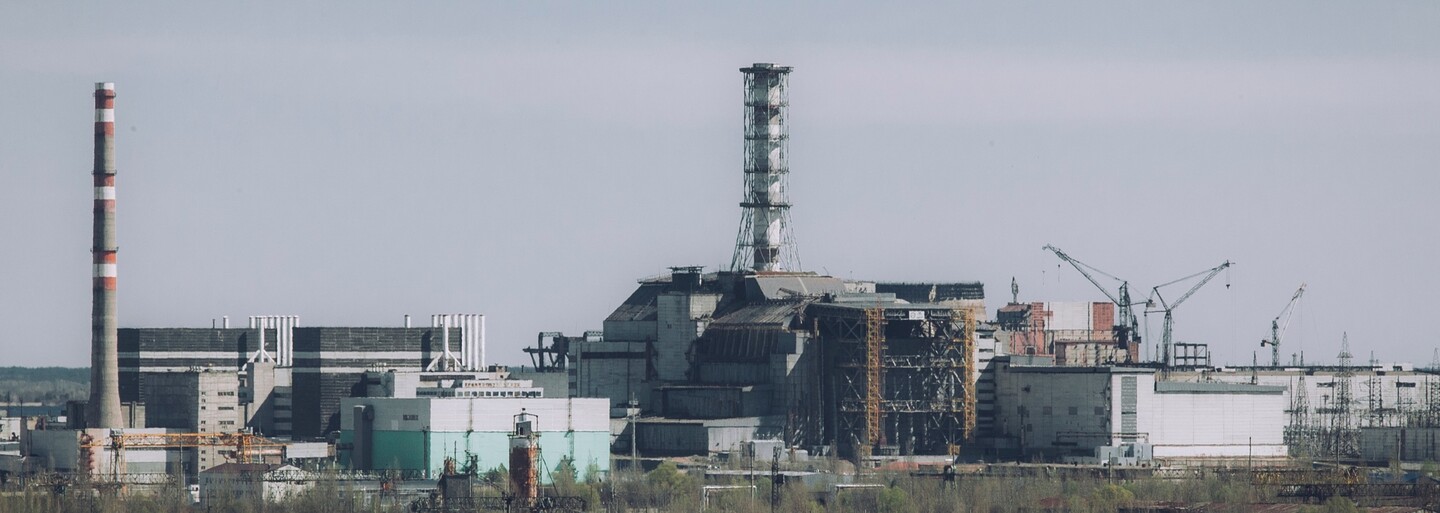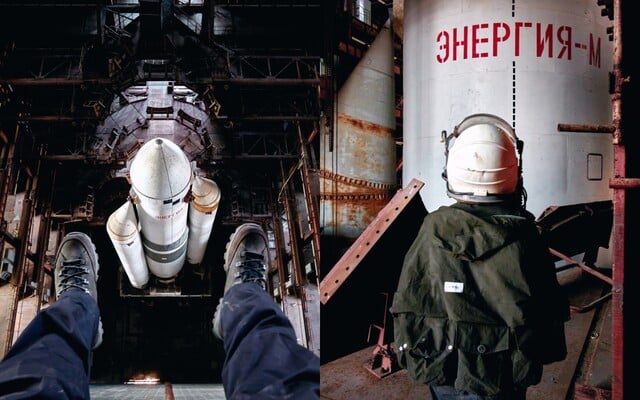 6 Interesting Facts About The COP27 Climate Conference. Largest Number Of Lobbyists In History And The Absence Of World Leaders
6 Interesting Facts About The COP27 Climate Conference. Largest Number Of Lobbyists In History And The Absence Of World Leaders
6 Interesting Facts About The COP27 Climate Conference. Largest Number Of Lobbyists In History And The Absence Of World Leaders
6 Interesting Facts About The COP27 Climate Conference. Largest Number Of Lobbyists In History And The Absence Of World Leaders
Is Chernobyl Still a Threat?
Russian has cut off electricity from the Chernobyl's nuclear power plant. Ukraine warns that the power plant still stores used nuclear fuel, from which radiation could dissipate. How real is this threat?
If problems persis, please contact administrator.

"The Russian army is shooting at the largest nuclear power plant in Europe. A fire had already broken out inside. If it explodes, it will be a disaster 10 times greater than Chernobyl," Ukrainian Foreign Minister Dmytro Kuleba wrote in the early morning hours of March 4th. He wasn't making this up, the Russians were actually shooting at the Zaporozhye nuclear power plant.
Russian troops managed to take control of the largest nuclear power plant in Europe several hours after the gunfire broke out. They were shooting at the office building, so fortunately, they were did not aim directly at the reactors, but shooting at the nuclear power plant is in itself a threat.
However, the situation is also complicated at the Chernobyl power plant, which exploded in 1986. Putin's army has been occupying Chernobyl since the early days of the invasion of Ukraine. For two whole weeks, they refused to let the employees go home, and in the meantime managed to disconnect the electricity supply. At present, however, the power plant should be reconnected to the grid.
We found out how risky it really is if, in the future, Russians do not start electricity after the backup generators stopped working, and what remnants of used nuclear fuel Ukrainians still store in Chernobyl.
Chernobyl stores used nuclear fuel . What is the risk?
"The only power line supplying energy to the Chernobyl nuclear power plant and all its nuclear facilities that are occupied by the Russian army are damaged. Chernobyl has lost all its electricity," Ukrainian Foreign Minister Dmytro Kuleba said on Wednesday, March 9.
According to him, Russia has once again decided to scare the world with a nuclear disaster. Kuleba asked the international community to mediate a ceasefire near Chernobyl to repair the power line to the power plant. It didn't happen. "The back-up diesel generators have the capacity to supply Chernobyl with electricity for 48 hours," the minister said.
If they did not restore electricity to the power plant, the generators would gradually cease to operate and the plant in which used nuclear fuel is still stored would not be able to operate cooling systems. The used nuclear fuel must be constantly cooled, for the radiation to not get out, Kuleba said in a post.
The last Chernobyl reactor was in use until 2000
The Chernobyl disaster did not mean that the Soviet Union shut down the remaining three reactors. In 1991, a fire broke out at reactor number 2, which was subsequently disconnected by the Ukrainians, but the accident caused no significant radiation leaks. Under an international agreement, the Ukrainians shut down reactor number 1 in 1996, but the third reactor produced electricity until November 2000, explains BBC.
However, the decommissioning of the last reactor in 2000 did not end the work in Chernobyl. Business Insider writes, that not only had the Ukrainians have to build a new modern sarcophagus for the fourth reactor, which was finally completed and put into operation in 2019, but the using the reactors 1 and 3 until the turn of the millennium meant, that used nuclear fuel still remains in the power plant.
Used nuclear fuel in Chernobyl is stored in specialised plant, which currently stores around 20,000 fuel rods. The rods come from reactors number 1 and 3.
These fuel rods cannot be left just anywhere, as they require constant cooling to prevent their reheating. If the cooling stopped working, the water could evaporate and the risk of radiation escaping from the bars increases, states ABC News.
What risk does the used fuel present at the moment?
Newsweek explains that the current risk in Chernobyl is a potential leakage of radiation into the air, which, even with the disconnected electricity, would most likely be slow enough for the Ukrainian authorities to get the situation back under control.
British Professor Claire Corkhill of the University of Sheffield explained for BBC that even though the used fuel rods require constant cooling, there would be no danger of an explosion at Chernobyl, if the electricity was not switched on again.
"There is no danger of an explosion, but the water will gradually evaporate and this vapor may be radioactive as it may contain material escaping from inside the fuel rods," she explains. However, according to the professor, this leakage of radiation will be stopped the building itself, in which the pools with fuel rods are located.
"I don't think it would lead to a radiation leak, because evaporation of water would take a very long time. The used fuel is stored in a modern building that is sealed and has good structural integrity, ” says Corkhill on the subject of the fuel storage facility.
The fuel can no longer be heated up to a dangerous temperature, reassures the expert
The place in Chernobyl, where more than 20,000 fuel rods are stored, is located about 100 meters from the modern sarcophagus that covers the destroyed reactor number 4.
The International Atomic Energy Agency has confirmed that it has, in the meantime, lost contact with the Chernobyl monitoring systems, but even that loss of contact should not pose any greater risk. According to the agency, the last measured radiation rates did not deviate from normal.
Nuclear energy expert Mark Nelson from the Radiant Energy Fund explained on Twitter, that fuel rods stored in Chernobyl are at least 22 years old today. "They have very little heat that they can dissipate. Most power plants which store fuel that is more than five years old, store it dry and simply cool it with air.”
Nelson argues that the ability of a fuel rod to dissipate heat is related to how much energy it used to produce in the reactor and for how long it has been inactive. According to him, the 22 years that the fuel rods have been in the cooling system is a very long time, and what's more, the RBMK reactor type used in Chernobyl requires the fuel rods to produce much less heat than other types of reactors.
Imprisoned power plant personnel are a growing problem
"The Chernobyl nuclear power plant has been shut down for more than 20 years and a significant number of used fuel parts (approximately 21,000) are stored in the local pools. However, it is not plausible for this used nuclear fuel to get damaged enough to endanger us as a result of a cooling failure, " explains Czech State Office for Nuclear Safety.
"In order to damage the fuel in the event of a cooling failure, it would first be necessary to heat the water in all of the pools to 100 degrees Celsius, then enough of this water would have to evaporate in order to expose the fuel. The fuel would then have to be superheated to a temperature of about 400-500 degrees Celsius, maybe more, to melt," explains the office
However, the head of the office, draws particular attention to the situation of the staff in both the Chernobyl and Zaporizhzhya nuclear power plants. The Russians don't want to let them go home. In Chernobyl, the staff has been working continuously for more than two weeks. Russians have seized the Zaporozhye nuclear power plant last week.
If problems persis, please contact administrator.












